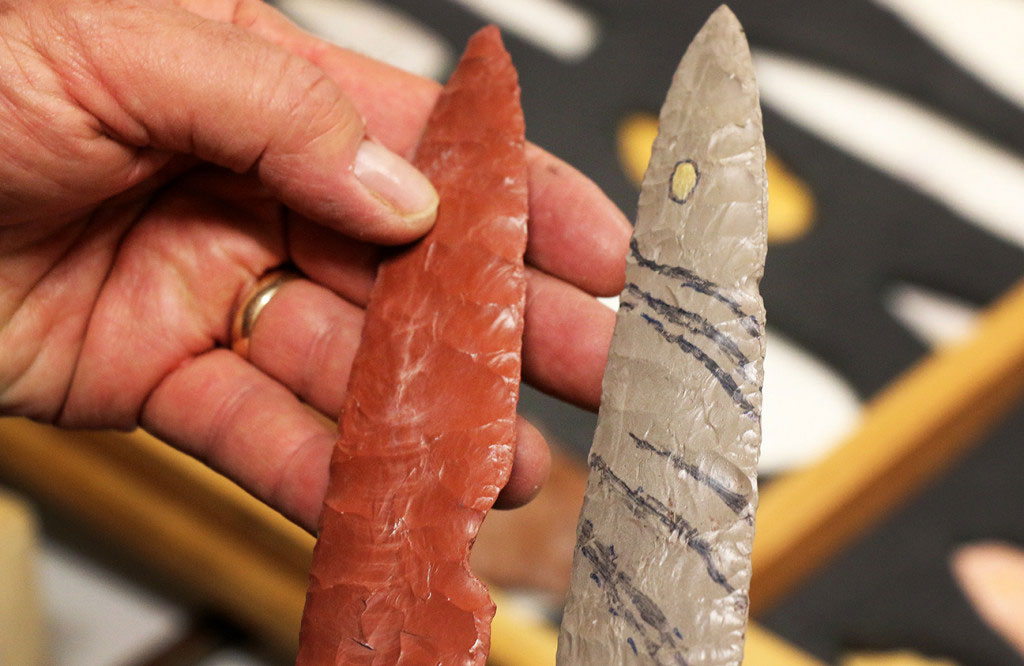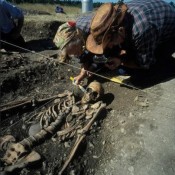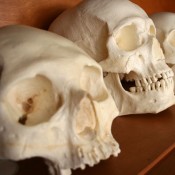Dating back to the Stone Age, ancient artifacts provide us an important window into the history of ancient civilization. Thanks to Northern Arizona University’s lithic casting lab, students are getting to work directly with these artifacts, using new technology to create replicas.
Francis Smiley, professor and curator of the lithic cast teaching and research collection, has spent the last three years building NAU’s collection of more than 900 epoxy resin lithic artifact casts.
Lithic refers to sedimentary, igneous or metamorphic rocks, eroded down to sand-sized grains combined to mold and create different shapes. The casting process uses the lithic grains to make 3-D replicas of various artifacts, giving archeology students a hands-on experience that may otherwise be unavailable.
“The original artifacts are locked away in museums or private collections that are almost entirely inaccessible to students,” Smiley explains. “The lithic casting process gives students and researchers hands-on experience with exact, museum-quality replicas of artifacts.”
Graduate and undergraduate students regularly use the stone casts to investigate research, complete class assignments and learn about the history of human technological development.
The artifacts, which come from North America, Europe, South America and North Africa, date back two million years. Smiley’s primary focus is replicating relics from the Clovis people, the earliest inhabitants of the Americas dating back 13,000 years.
Tim Murphy, a graduate student who studies ancient trails in the Mohave Desert, said the cast collection and experience working in the lithic lab is invaluable. “You get to experience how to make things, how difficult it is and it really gives you a firm perspective of the challenges of ancient living,” Murphy said. “Here, we get to experience all lithic technologies from every time period from around the world. Not only that, but we get to see actual data preserved in the casted stone. It’s pretty amazing.”
The artifacts that Smiley has casted at NAU are displayed in museums and universities around the world.




